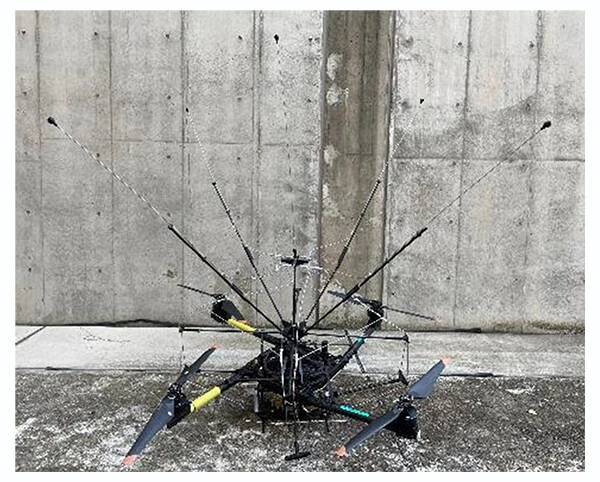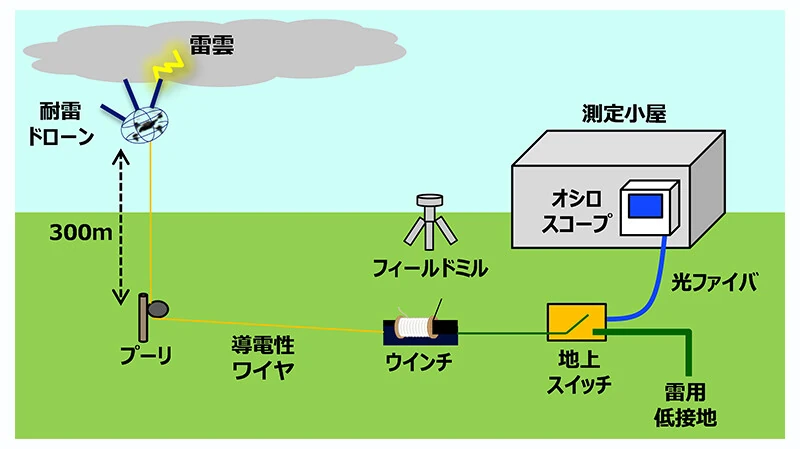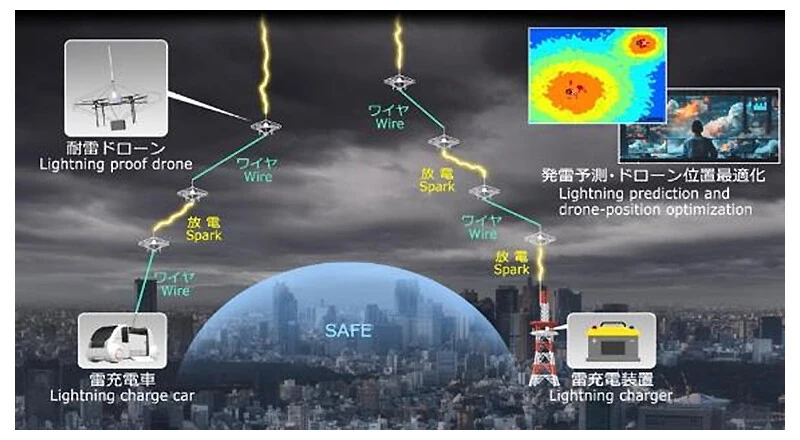Japan’s NTT Corporation has achieved a historic breakthrough in lightning protection technology with an advanced drone system capable of proactively “luring” and “controlling” lightning. The core lies in the ability to build drones that can withstand direct lightning strikes while also redirecting lightning to safe areas, protecting cities and infrastructure. The world’s first successful field verification was conducted by NTT on December 13, 2024.

The system operates by deploying a network of drones to trigger controlled lightning strikes, thereby minimizing estimated economic damage of hundreds of billions of Yen annually in Japan alone. The drones are equipped with a special Faraday cage, acting as a “protective shield” to keep internal electronics safe from extreme currents.

In the experiment, a drone equipped with a grounding wire was flown to an altitude of 300 meters beneath a thundercloud. When the electric field intensity reached a certain threshold (up to 2000V between the drone and the ground), a switch was activated to create a conductive connection. The results showed that lightning actively struck the drone, and the drone maintained stable flight thanks to the protective cage.

Tests show that the drone’s lightning-proof cage can withstand currents up to 150kA, 5 times the average natural lightning intensity, with a protection efficiency of up to 98%. The Faraday cage design also helps suppress electromagnetic interference, ensuring stable drone operation in harsh electromagnetic environments. NTT is continuing research to improve the accuracy of predicting lightning strike locations and develop systems for storing energy from lightning.

